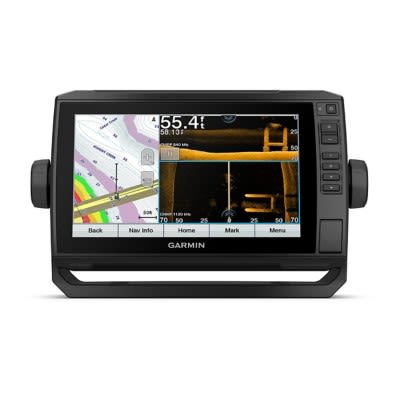Today's Best Fishing Times
Get the best fishing times for Rice Lake with Lake-Link's Fishing Forecast. SEE MORE
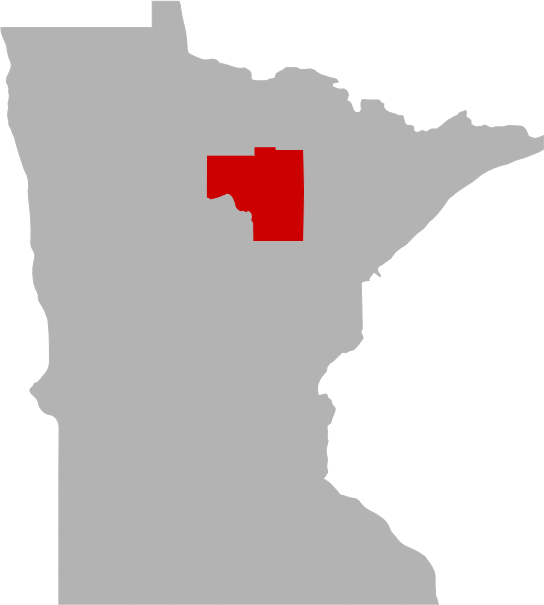
Share your catch!
We want to see what you've caught on Rice Lake.Frequently Asked Questions About Rice Lake, MN
- How big is Rice Lake?
- How deep is Rice Lake?
- What kind of fish can you catch in Rice Lake?
- What are the closest cities to Rice Lake?
- Are there places to stay in the Rice Lake area?
- Are there boat launches on Rice Lake?
- Are there places to eat and drink near Rice Lake?
- What is the average air temp for Rice Lake?
- Are there any state parks near Rice Lake?
How big is Rice Lake?
How deep is Rice Lake?
What kind of fish can you catch in Rice Lake?
Other fish species in the lake include Banded Killifish, Central Mudminnow, Cisco (Tullibee), Golden Shiner, Hybrid Sunfish, Iowa Darter, Johnny Darter, Mottled Sculpin, Spottail Shiner and White Sucker.
What are the closest cities to Rice Lake?
Are there places to stay in the Rice Lake area?
More Lodging Options
Are there boat launches on Rice Lake?
Are there places to eat and drink near Rice Lake?
Explore the Rice Lake area in a RV
Are you looking for an adventurous vacation option that won't break the bank? Look no further than renting an RV! Contrary to popular belief, the process is much simpler than you might imagine. With just a few easy steps, you'll soon be experiencing the ultimate freedom and convenience of exploring the open road in your very own recreational vehicle. And the best part? RV travel can save you up to 60% compared to other types of vacations! With the money you'll save, you'll be able to travel even more and create unforgettable memories along the way. So why wait? Start planning your next adventure today with an RV rental. Learn more about renting a RV.
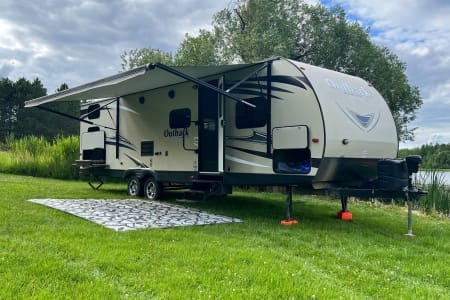
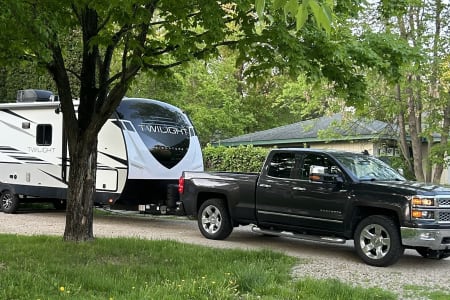
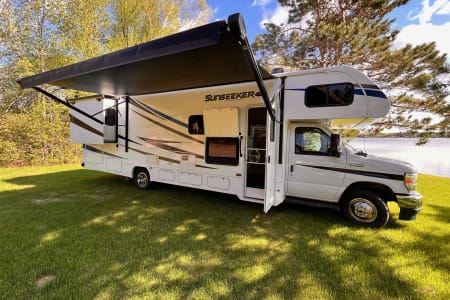
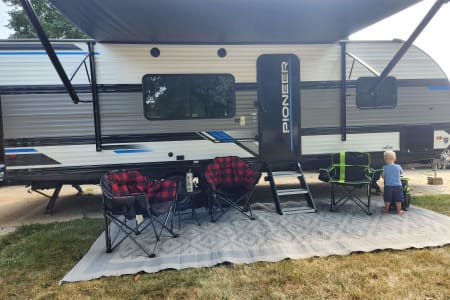
History & Status of the Fishery
Rice Lake is in ecological lake class 27 and is located five miles southwest of Grand Rapids, Minnesota, in the Mississippi River Watershed. Rice Lake has a total surface area of 857 acres, a littoral area of 229 acres, and a maximum depth of 68 feet. Secchi disk transparency has varied from 10.0 in 1957 to 15.0 ft in 2002. The 1990 survey reported a total alkalinity of 136 ppm. The lake has two unnamed inlets and one outlet (Rice Creek), which flows into Little Rice Lake. Rice is a sprawling lake with several distinct basins oriented from west to east. The lake supports a diverse aquatic plant community, which provides important fish habitat. Lake shore development is moderate and large tracts of undeveloped land exist on the northern shoreline. There is a public access on the western end of the lake.
The lake management plan (LMP) was last revised in 2003. Northern pike and largemouth bass were considered primary management species and black crappie were a secondary management species. The goals of the 2003 LMP were to maintain the northern pike gill net catch at 5.0 fish/net, with length goals of 60% of the sample exceeding 21inches, 25%>28 inches, and 5%>34 inches. Another goal was to maintain a black crappie gill net catch of 4.0/net with 40%>8 inches and 10%>10 inches. There are no special regulations on Rice Lake and statewide limits and seasons apply.
A population assessment was conducted during the summer of 2011. Electrofishing for largemouth bass was completed in mid June. The electrofishing assessment consisted of 6 stations. Test netting was conducting in late July and consisted of 12 gill net and 12 trap net sets. Rice Lake was included in statewide near shore sampling for Index of Biological Integrity (IBI). IBI sampling was conducted in late July and consisted of backpack electrofishing and shoreline seining.
Bass electrofishing resulted in a catch 59 largemouth bass. The catch rate was similar to other area lakes, and indicated that largemouth bass are an important component of the fish community. Past assessments sampled bass in relatively high numbers, as gill net catches in the last five assessments been above average compared to similar lakes. Test netting may be a poor indicator of bass abundance, however, as bass are known to avoid nets. Electrofishing captured bass ranged from 4.7 to 18.8 inches with a mean of 11.7 inches. The size structure was moderate, as most of the bass exceeded the quality size of 12 inches. Few bass exceeded the angler preferred size of 15 inches. Growth was slow compared to the statewide average, as individuals typically exceeded 12 inches by age 5 and did not achieve 15 inches until age 8. Slow growth and a lack of larger individuals may limit the popularity of the bass fishery.
Northern pike were the most common fish in the gill net sample and the catch rate comparable to similar lakes, average for Rice Lake, and met the 2003 LMP goal. Northern pike ranged from 15.5 to 32.3 inches with a mean of 22.4 inches. The length goals of the 2003 LMP were not met. Size structure was moderate and similar to past assessments. No pike exceeded the memorable length of 34 inches. Age analysis identified 9 year classes (ages 1-9) and recruitment appeared consistent. Only 26% of the sample exceeded age 5 and captured pike averaged 3.1 years of age. The lack of older individuals suggested high mortality of adult pike, and may indicate high harvest rates or older fish. Growth was relatively fast with individuals typically exceeding 21 inches by age 4 and 28 inches by age 7. Rice Lake has the potential to produce a high quality pike fishery. Anglers can help improve the size structure by releasing northern pike larger than 24 inches.
Tullibee were the second most common fish in the gill net and the catch rate was high compared to similar lakes. Tullibee ranged from 7.8 to 14.6 inches with a mean of 11.3 inches. Most of the captured tullibee contained the fish parasite Trianephorus. The tullibee is an important prey specie and benefits the production of large predators such as northern pike.
Rice Lake has a history of poor yellow perch catches. Yellow perch were low rate compared to similar lakes, but near average for Rice Lake. Perch ranged from 5.5 to 11.0 inches with a mean of 7.3 inches. Few perch exceeded the quality length of 8 inches. Growth was near the statewide average with individuals exceeding 8 inches by age 5. Low abundance and small average size likely limit the popularity of the perch fishery.
Rice Lake has a history of producing relatively high black crappie catches, as gill net catches were high compared to similar lakes in seven of the past nine assessments. The 2011 catch was within the expected range for similar lakes, but was the lowest catch of crappie recorded for Rice Lake. The catch failed to achieve the 2003 LMP goal. Captured crappie ranged from 3.8 to 11.0 inches with a mean of 8.4 inches. Recruitment was relatively consistent from 2006-2008. No crappies older than age 6 were captured, suggesting poor recruitment or high mortality of adult crappie in the recent past. The 2003 LMP noted moderate angling pressure for crappie on Rice Lake. Inconsistent recruitment of black crappie is a common life history trait for many populations, often resulting in "boom and bust" angling cycles. Growth was near the statewide average with individuals exceeding 8 inches by age 4.
Lakes with similar habitats typically produce moderate bluegill populations characterized by moderate growth rates and size structures. Bluegill from Rice Lake were captured at an average lake compared to similar lakes, but below average for Rice Lake. Captured bluegill ranged from 3.5 to 8.1 inches with a mean of 6.5 inches. Size structure was moderate, as most individuals exceeded 6 inches but few bluegill exceeded 8 inches. Age structure favored older individuals, as 88% of the captured bluegill were age 5 or older and the average age was 6.1 years. The abundance of older bluegill suggested low mortality of mature bluegill and low harvest rates. Growth rates were near the lake class average, as individuals typically exceeded 6 inches by age 6. Growth rates were too slow to consistently produce angler preferred size fish and the lack of larger individuals likely limits the popularity of the bluegill fishery.
Rice Lake supports a diverse fish community. Other species captured during test netting included bowfin, hybrid sunfish, pumpkinseed sunfish, rock bass, walleye, and yellow bullhead. Species captured during IBI sampling also included Iowa darter, banded killifish, central mudminnow, mottled sculpin, and Johnny darter.
The protection of water quality and habitat is critical in maintaining or improving fish and wildlife populations. Unfortunately, human activities often negatively impact our lakes. Fertilized turf-grass lawns and failing septic systems along with the removal of shoreline and aquatic vegetation, mowing to the shore, and installing sand blanket beaches result in destabilized shorelines, uncontrolled erosion, and increased run-off, contributing excess nutrients and sediment to the lake and degrading water quality and habitat. By understanding the cumulative impacts of our actions and taking steps to avoid or minimize them, we can help insure our quality water resources can be enjoyed well into the future. Anglers can further help insure quality fishing by practicing selective harvest and catch and release.
Anglers and boaters are reminded to help stop the spread of invasive species by removing all aquatic plants from boats, trailers, and equipment. All drain plugs must be removed and live and bait wells must be drained before leaving the access. Anglers and boater are encouraged to power wash and thoroughly dry all equipment prior to use in another water body.
What is the average air temp for Rice Lake?
Are there any state parks near Rice Lake?
For more Minnesota State Park information see our State Park Guide.
More Nearby Lakes To Explore
There's more lake's to explore around Rice Lake...| DISTANCE | ACRES | MAX DEPTH | |
| Little Rice Lake | 1.7 mi | 139 | 32 ft |
| Guile Lake | 1.8 mi | 88 | 60 ft |
| Long Lake | 1.8 mi | 134 | 85 ft |
| Loon Lake | 2.1 mi | 231 | 69 ft |
| Little Cavanaugh Lake | 2.7 mi | 24 | 27 ft |
| Cavanaugh Lake | 3.0 mi | 55 | 48 ft |
| Blackwater Lake | 3.0 mi | 601 | 72 ft |
| Jay Gould Lake | 3.1 mi | 552 | 33 ft |
| Leighton Lake | 3.6 mi | 244 | 63 ft |
| Little Jay Gould Lake | 3.8 mi | 150 | 56 ft |






